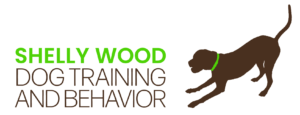
My house has been an eventful place over the last couple of months! I took in my first ever foster dog, Cross, an eight month old lab mix, for almost two weeks, and after he left, not even a week later I adopted Castor, an itty bitty pitty puppy, who has been here about a month now. And I had not even planned on adding a new dog to the mix! Whew!
Both the new dogs, and the dog and cat who already live in the house have done amazingly well! Very little has been chewed up; to be exact, the lab chewed up one journal, and the puppy has chewed a hole in a pair of shorts. There have been no problems with any of the animals together, and Castor has not been incessantly nipping me and has had hardly any potty accidents in the house!
Wow! These must be exceptional puppies! Either that, or their success is a result of my top-notch training skills, right? Actually, they are both pretty typical puppies, and I haven’t been the most proactive trainer with either of them. What really set us up for success was putting time into thinking about how to best set the environment up so the dogs would behave the way I hoped they would. Are you thinking of getting a new dog or puppy? Or maybe you have a dog who is doing some things you wish he were not doing. Often, just a little bit of time on the front end arranging your environment can go a long way to prevent problem behaviors that can last a lifetime.
Here are a few of the things I did on the front end to set myself up for success. I put up three baby gates and two exercise pens. This allowed me to keep all the animals separate when necessary. Initially I kept them separate with a room and multiple gates between them. This made it relatively simple to manage animal to animal interactions while keeping all safe and as comfortable as possible. The animals who already lived here got to get used to the newbies slowly before sharing all of their space, all of the time, and the new animals had their private, safe space too. Over time, as the animals got to know each other a bit better, I reduced the space between then so that there was just one gate between them, with the eventual goal being, of course, not to need the gates. Castor has worked up to not needing the gates often, and he spends most of his time integrated into the regular household routine, but I still use the gates and pens with him, and expect to for quite a while to help manage not only dog to dog interactions, but also other common puppy behavioral challenges. I think too often, we give the puppies in our lives, a ton of freedom before they have the skills they need to be successful in our houses.
With both of these new puppies, managing the environment, and not giving them free reign helped to prevent potty accidents in the house, chewing on items I didn’t want them to chew on and jumping on people in the house. Along with the various gated areas, I provided lots of interesting things for the dogs like chews, toys, and food puzzles, and I rotated new items through to keep it interesting. Simply preventing unwanted behavior, while providing opportunities to engage in things that are interesting for the dogs, means that those unwanted behaviors aren’t being practiced and that other learning is happening too. For example: when in the house – “four feet stay on the floor, I chew on these objects, I am calm around the other animals in the house, etc.”
We have done, and continue to do, training to help with introductions, basic manners, and other things, but honestly not a ton of it just yet, and I truly attribute most of the success so far to thoughtfully arranging the environment. What kinds of challenges are you having with the dog in your life right now? Is there a way you could change the environment in which that problem behavior is occurring so that your dog might do something that is more desirable to you?
